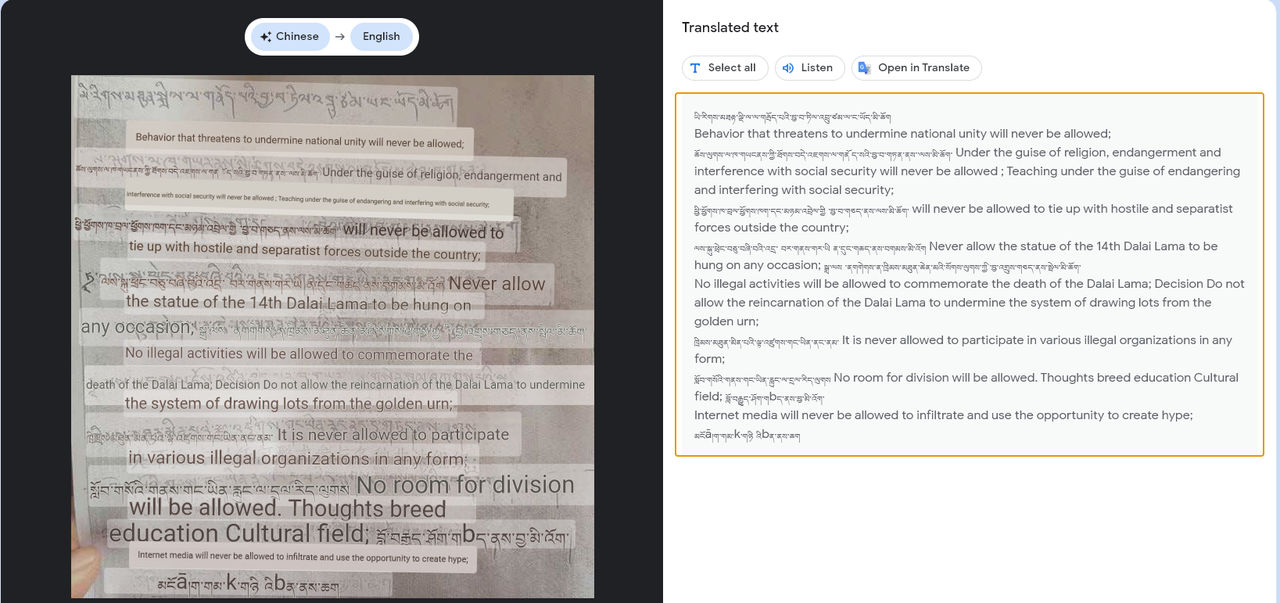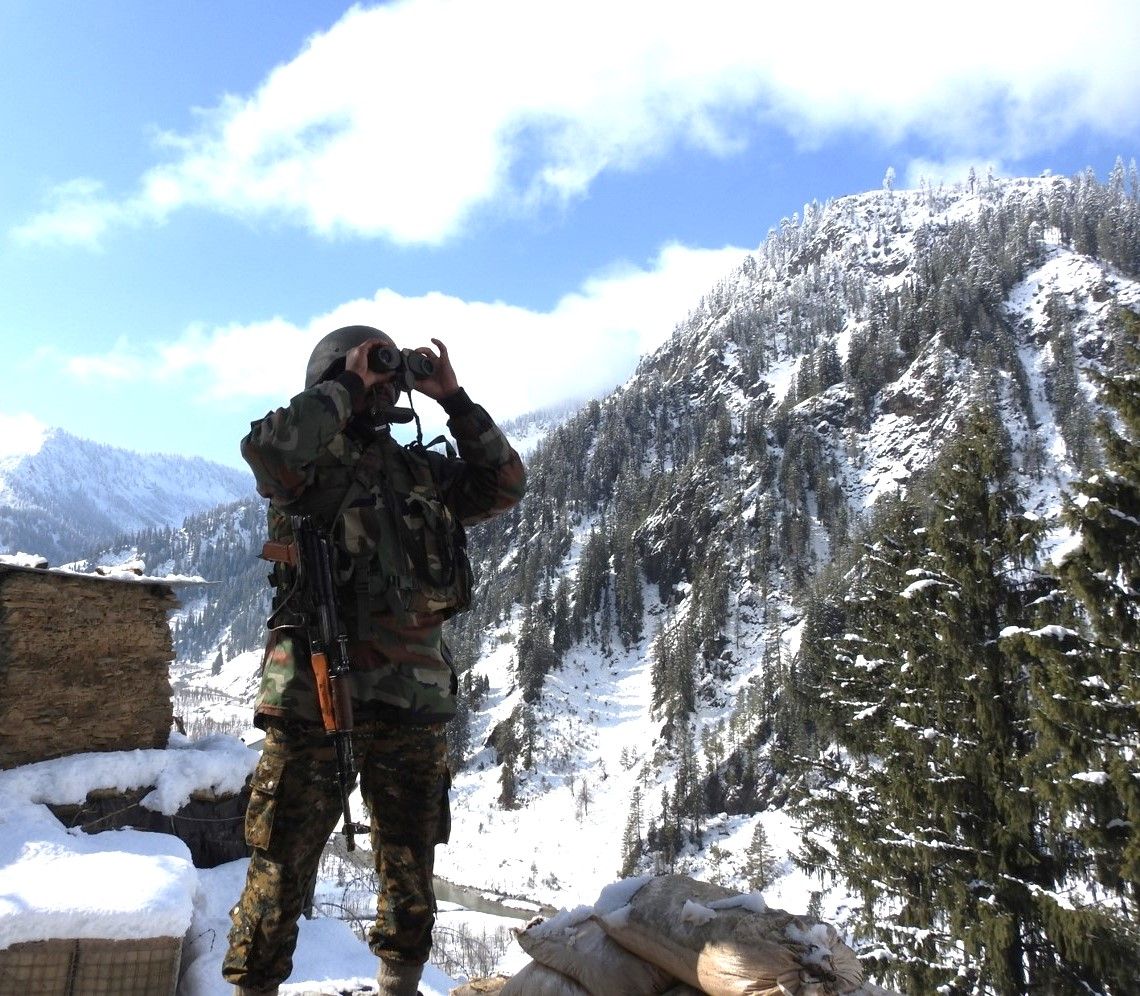Updated April 12th, 2024 at 00:56 IST
Controversy Erupts as China Restricts Tibetan Buddhist Practices in Dalai Lama's Name
China has distributed a training booklet with directives curbing Tibetan Buddhist rituals, particularly those associated with the Dalai Lama's passing.
Advertisement
Lhasa: The Chinese government's recent actions in eastern Tibet have raised alarms internationally, with critics decrying what they see as a blatant violation of religious freedoms. A training booklet distributed to Tibetan monasteries has ignited controversy, particularly its directives aimed at curbing religious rites and rituals associated with the Dalai Lama's passing.
The booklet, intercepted by reliable sources, outlines stringent prohibitions against Tibetan Buddhist monks engaging in what the Chinese government deems as "illegal" religious activities. These directives include restrictions on commemorating the death of the Dalai Lama, and prohibiting any activities that may "undermine national unity" or “endanger social security.”
Advertisement

Critics argue that such measures represent a clear infringement on the religious rights of Tibetans, particularly given the Dalai Lama's status as the exiled spiritual leader of the Tibetan people. Furthermore, the directives aim to suppress expressions of Tibetan identity and cultural heritage, posing a threat to the unique religious practices and traditions of Tibetan Buddhism.
Historical context and Tibetan struggle for autonomy
The Chinese government's actions in Tibet must be understood within the broader historical context of Tibet's relationship with China and the Tibetan people's struggle for autonomy. Following the proclamation of the People's Republic of China, Tibet was formally reincorporated into the country in 1951, under what the Chinese government termed the "Seventeen Point Agreement."
However, tensions between the Tibetan government and the People's Republic of China escalated, culminating in the 1959 Tibetan uprising and the subsequent exile of the Dalai Lama. Since then, Tibetans have faced ongoing repression and cultural assimilation policies imposed by the Chinese government, leading to widespread international condemnation.
Advertisement
The Tibetan diaspora and human rights organizations have long criticized China's policies in Tibet, referring to the events of 1950 as a "Chinese invasion" rather than a "peaceful liberation," as claimed by the Chinese government. The dissolution of the Tibetan government and social structures following the 1959 uprising marked a turning point in Tibetan history, with Tibetans continuing to advocate for autonomy and religious freedom.
Tibet's contribution to the Indian Army
Tibetans have a long history of resistance against Chinese rule, and this history intersects with their contributions to the Indian Army. During the time of the Great Game, the British Indian Army began employing Tibetans as spies, intelligence agents, and even covert militia in northern India and Tibet proper. This strategic partnership continued into the modern era, with Tibetans playing significant roles in the Indian Army.

Advertisement
At the time of Indian independence, the northern mountain-covered region of India remained the most isolated and strategically overlooked territory of the subcontinent. As tensions between India and China rose, particularly during the Cold War era, Tibetans became instrumental in intelligence gathering and military operations along the Indo-Tibetan border.
The American Central Intelligence Agency (CIA) and the Indian Intelligence Bureau (IB) established Mustang Base in Mustang, Nepal, which trained Tibetans in guerrilla warfare. These efforts culminated in the formation of the Special Frontier Force (SFF), a covert paramilitary unit composed primarily of Tibetan refugees. The SFF played a crucial role in various military operations, including the 1971 Indo-Pak war and the Kargil conflict of 1999.
Advertisement
Former CIA officer John Kennet Knaus credited IB Chief Bhola Nath Mullik for the formation of the SFF, highlighting the close collaboration between Indian and Tibetan forces. Additionally, thousands of Tibetans received training from the United States Army Special Forces, partly funded by the federal government of the United States, further emphasizing the strategic importance of Tibetan contributions to Indian military efforts.
Despite the geopolitical complexities surrounding Tibet's status and its historical ties with India, Tibetans continue to serve with distinction in the Indian Army, embodying the spirit of resilience and sacrifice in defence of their adopted homeland. As tensions between India and China persist, the contributions of Tibetans to the Indian military remain a testament to their unwavering commitment to freedom and democracy.
Advertisement
Published April 12th, 2024 at 00:56 IST